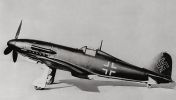
fiat g56521 viewsOct 02, 2004
|
|
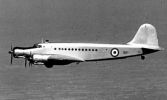
fiat g.122695L504 viewsOct 02, 2004
|
|
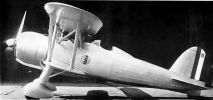
FIAT CR 42 falco548 viewsThe last of the biplane fighters, the Falco flew for the first time on 23 May 1938. It served on most fronts, first as a fighter, and quickly changed to ground support due to the inability of the aircraft to tackle modern allied aircraft. The Fiat CR42 was considered the most agile biplane fighter of WWII, and was certainly a hard target to hit, for the more modern but less maneuverable monoplanes. The Falco was lightly armed, as most of the fighters of it's time were, with 2 12.7mm Breda-SAFAT and still now holds the record of the fastest biplane (439 km/h) in WWII. At the time of El Alamein it was used as ground attack plane. The Falco finished its carreer as a night fighter defending Northern Italy.It was very nice to fly and very manouvrable, with a good pilot could even face the first series Hurricanes.
Oct 02, 2004
|
|
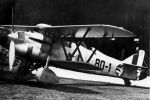
FIAT CR 32525 viewsEasily recognizable by its annular radiator and its closely cooled engine ,The C.R.32 "Freccia"(Arrow), was an excellent biplane fighter, being robust and fast. The C.R.32 was a single seat biplane fighter.The armament consisted of two 7.7mm Breda Safat machine guns (upgraded at 2 12.7 on later version) mounted on the side of the cooling radiator. Designed by Italian engineer Celestino Rosatelli, after first flew (in 1933),was built above in 1300 planes (including Spanish licensed production). In 1940, 300 planes were still in 1st line service.
Oct 02, 2004
|
|
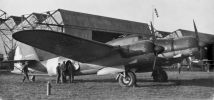
CANT Z.1015619 viewsDevelopment of the Z.1007 with 1500hp Piaggio P.XII RC35 Oct 02, 2004
|
|
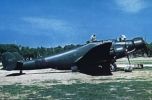
CANT Z 1007643 viewsThe three-engine formula, much developed by Italian manufacturers, had another noteworthy representative in the CANT Z. 1007, the bomber that, together with the SM.79 and BR.20, constituted the Regia Aeronautica's standard equipment during the conflict. A total of 560 aircraft were built in three production series from 1939 to 1943. The Alcione was widely used on all fronts, proving to be an effective aircraft, despite the emergence of problems of structural weakness in extreme climates, such as Africa and Russia, due to its being built entirely of wood. in 10/40, the Z.1007 was largely used in the invasion of Greece, followed by service in the Mediterranean, North Africa and especially against Malta. On the Russian front, the use of the three engine bombers was sporadic and intermittent. At the time of the armistice, the few remaining Z.1007's were split about evenly between the pro-Axis and Co-Belligerent air forces. At its height, the Z.1007 was used by 4 Stormos, 7 Groups and 2 squadrons. Oct 02, 2004
|
|
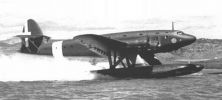
CANT Z 511 Long Range Hydroplane881 viewsThe Cantz 511 Long Range Cargo Hydroplane was first designed by Fillipo Zappata. The first flight took place in Monfalcone (Trieste, north-eastern Italy) in October 1940. It's first operational start took place in February 1942 (Italian territory). On January 1942, the hydroplane had to be employed on different long range routes, as the war against the United States prevented the civil use of CANTZ511 in the Atlantic area. Some had the odd idea of a spectacular mission in the skies of New York, launching one ton of tri-coloured leaflets. Some others thought about a non-stop Rome-Buenos Aires raid (8000 km!). None of these projects was carried out. And it was a real pity, as the test pilot Mario Stoppani - between the end of February and the beginning of March 1942, during the last trials - succeeded in taking off and landing (full loaded) with very rough sea, with 1.5 metres high waves and winds blowing at 55-65 kmh.
Oct 02, 2004
|
|
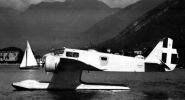
Caproni Ca.316802 viewsship-borne maritime reconnaissance float aircraft, Catapult reconnaissance seaplane version of the Ca.309 series. 14 built. Oct 02, 2004
|
|
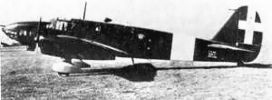
Caproni Ca.309686 viewsSmall twin-engined reconnaissance bomber. The Ca.309 was a low-wing monoplane of mixed construction and with fixed landing gear. 243 were built. Oct 02, 2004
|
|
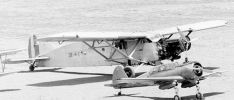
Caproni Ca.111904 viewsUtilized in the colonies in Africa for postal transportation. Internal structure covered in wood. Single-engined development of the Ca.101, used mainly as utility transport. Some had float landing gear. 149 built. Oct 02, 2004
|
|
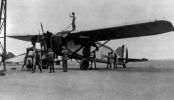
Caproni Ca.101798 viewsThis light bomber for 'colonial' warfare was used in the invasion of Ethiopia. It was a larger development of the Ca.97. Oct 02, 2004
|
|
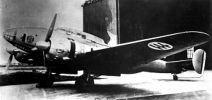
CANT Z 1018 Leone881 viewsIt was clear from the beginning of the flight test program that the performance of the Leone was so high that a production order was certain. This materialized in 1941 in the form of a contract for 300 aircraft to be powered by two Alfa Romeo 135 RC.32 or Piaggio P.XII RC.35 engines, depending on availability. In the event that the Alfa Romeo radial engine was available in larger quantities, and production started in 1943 with a powerplant of two such engines. By the time of the Italian armistace in 9/43 however, deliveries had reached only 10 pre-production and five production warplanes, and a few of these machines saw limited service with the 101st Bombardment Group. Such was the potential of the basic design that two important derivatives were proposed. The first of these was a heavy fighter was a fixed forward armament of 7 20mm cannon as well as a defensive outfit based on three 12.7mm trainable machine guns. The second was a night-fighter with German Lichtenstein SN-2 radar with the antenna in the nose.Oct 02, 2004
|
|
|
|